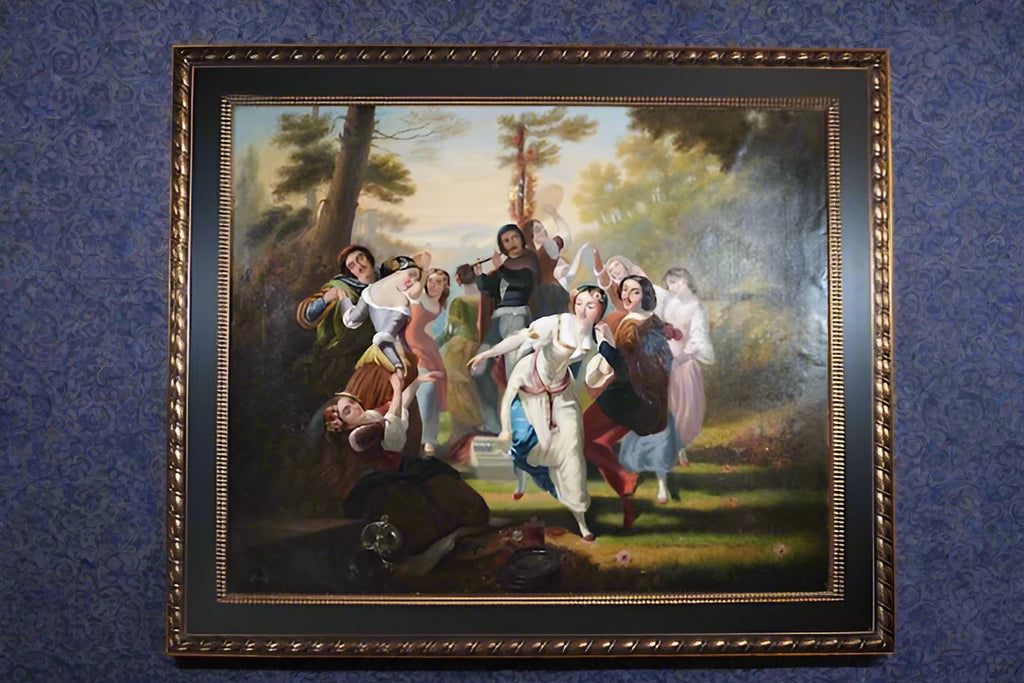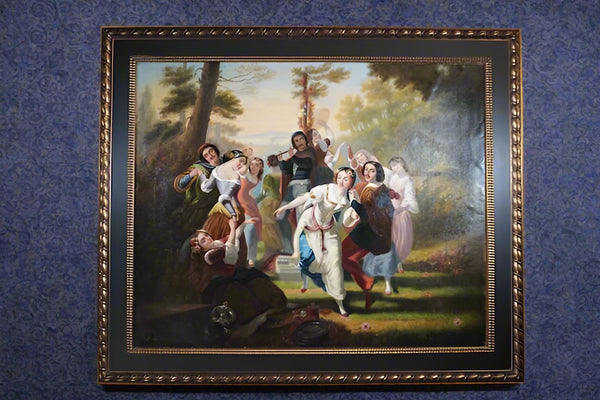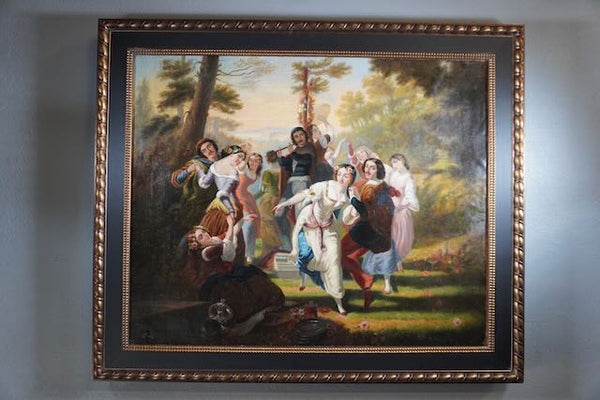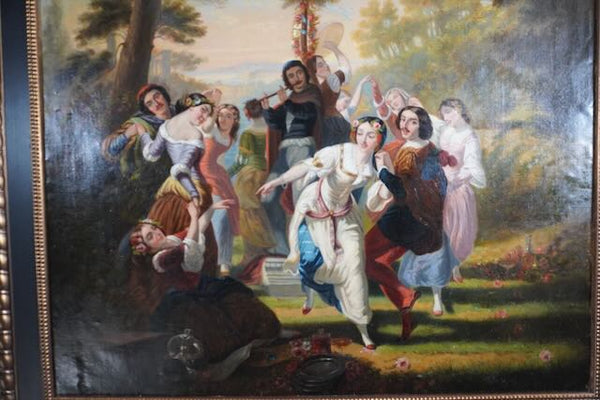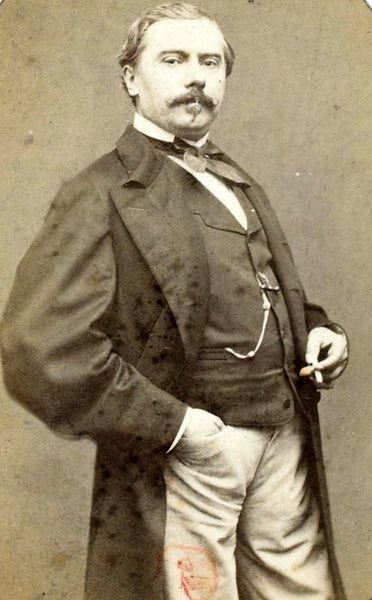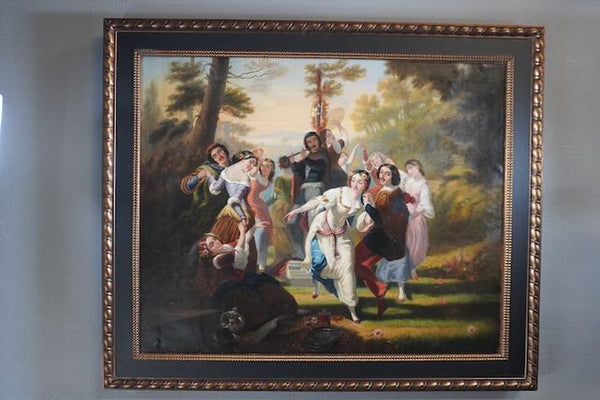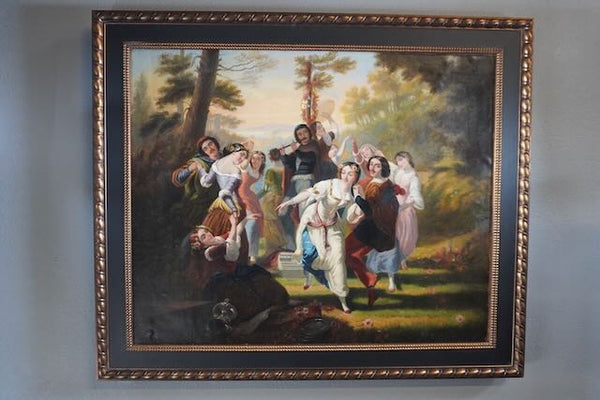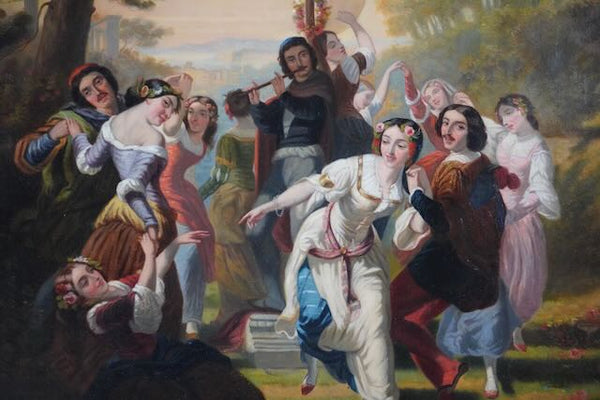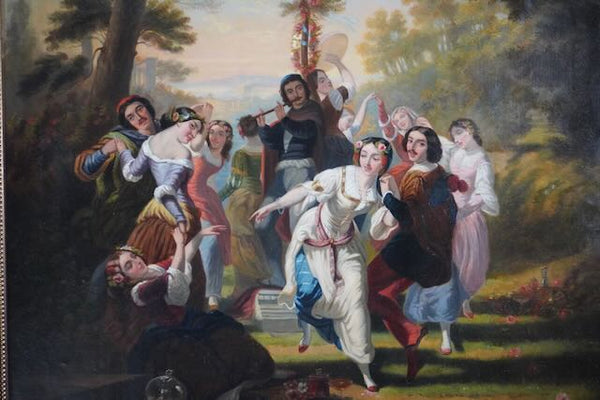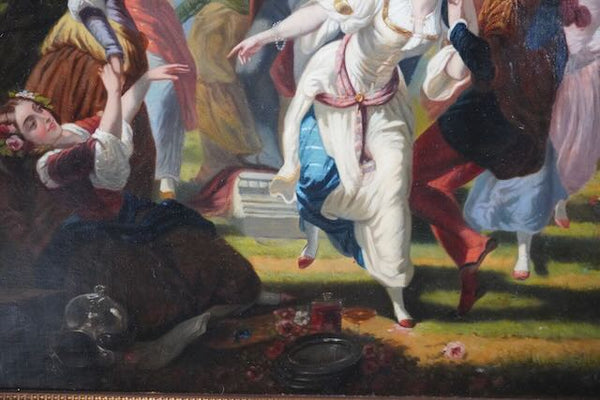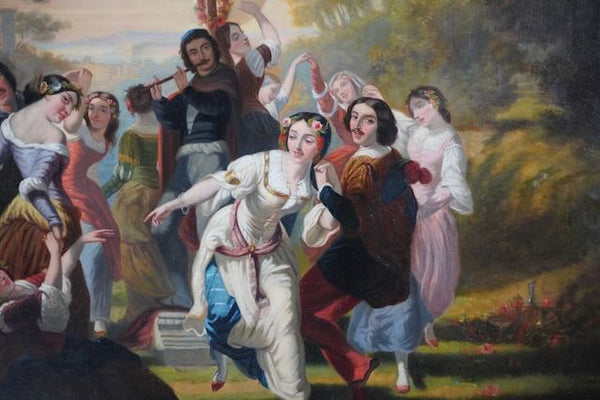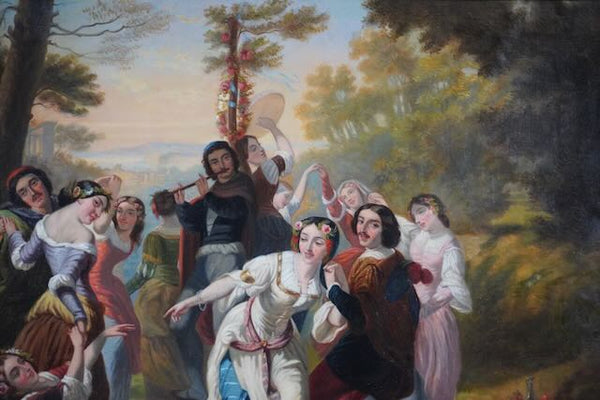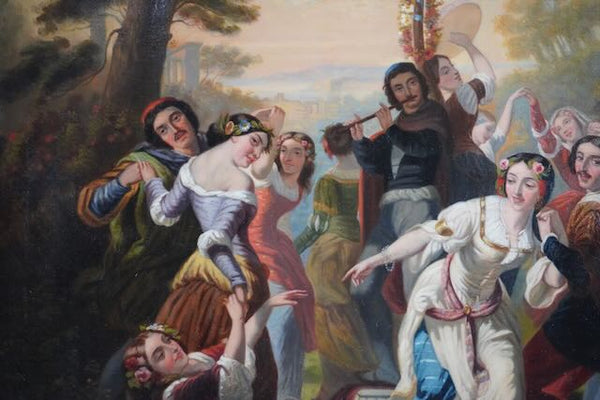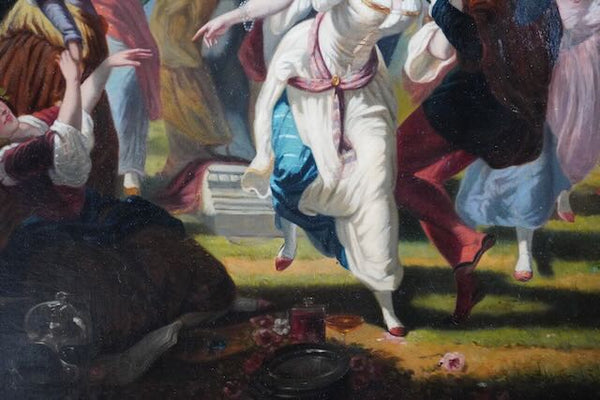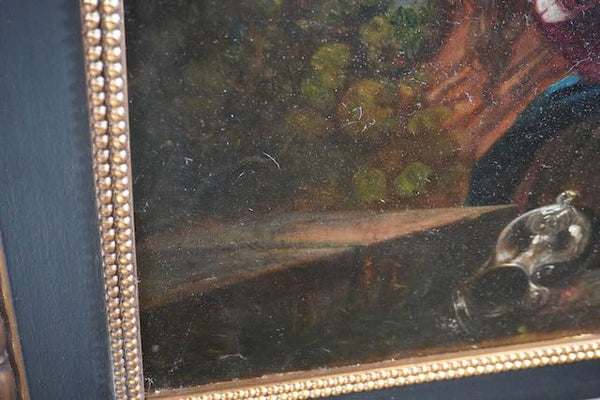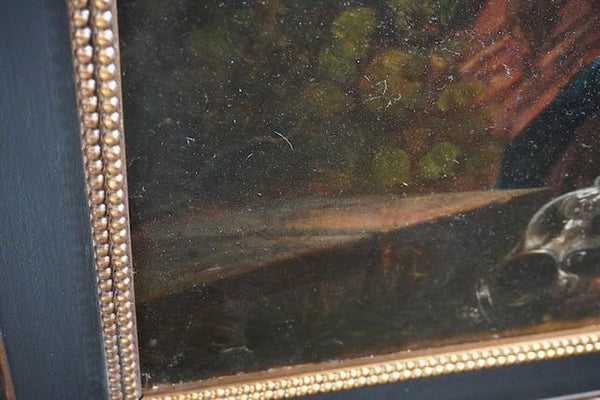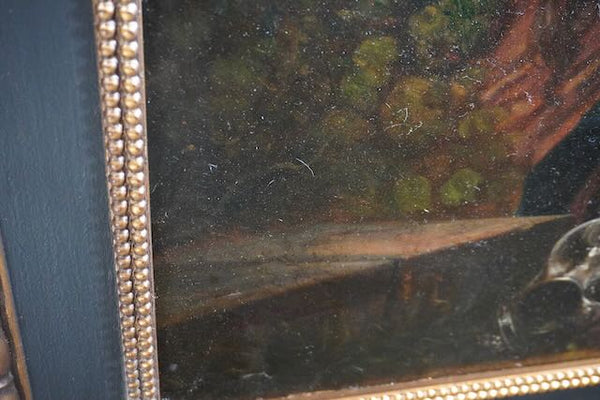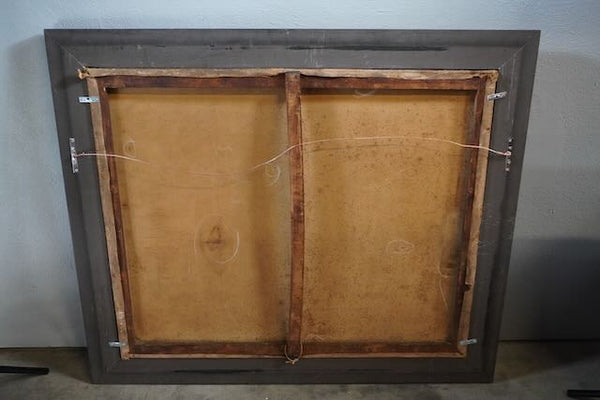Charles-Louis Müller (or studio of)- 19th Century Genre Painting of A May-Day Celebration - P3224
We place it as having been painted between the 1840s and 50s. Beautifully cleaned and restored by a top professional, it bursts with life and movement and imagination and pure romance. Spectacular in every sense of the word.
All indications point to it being the work of Charles-Louis-Lucien Muller or his studio, including an example of an almost identical version of the painting in existence, titled Le Rond de Mai, and of the same dimensions. This was common practice in the workshop of such a prolific and popular and commercial historical genre painter such as Muller, producing copies or versions of his "hits", perhaps with a tweak or two, as in this case (a few less figures) to satisfy demand for an original.
It measures 32" x 39 1/2" and the frame is 39 1/2" x 46 3/4".
Contact us to arrange special shipping, local delivery or pickup at the warehouse.
Charles Louis Müller (also known as Müller de Paris) (Paris 22 December 1815 – 10 January 1892 Paris) was a French painter.He was the pupil of Léon Cogniet, Baron Gros and others in the École des Beaux-Arts. In 1837 he exhibited his first picture, Christmas Morning. From 1850 to 1853 he directed the manufactory of Gobelin tapestries. In 1864 he became a member of the Académie des Beaux-Arts of the Institut de France, succeeding Jean-Hippolyte Flandrin.
He was a fecund producer of historic pictures and portraits. Among his works are Heliogabalus (1841), Primavera (1846), Haydée (1848), Lady Macbeth, and his masterpiece, Calling Out the Last Victims of the Reign of Terror at the Prison of Saint-Lazare (Appel des dernières victimes de la Terreur dans la prison de Saint-Lazare), with portraits of the most illustrious victims).Also notable are Vive l'Empereur, based on a poem by Méry about an episode in the battle before Paris, March 30, 1814 (1855), Marie Antoinette (1857), A Mass During the Reign of Terror (1863), Desdemona (1868), Lanjuinais at the Tribune (1869), The Madness of King Lear (1875), Charlotte Corday in Prison (1875), Mater Dolorosa (1877), The Martyrdom of St. Bartholomew and The Massacre of the Innocents.
He executed frescoes for the Salle d'État and the Galerie d'Apollon in the Louvre, and for the ceiling of the Salon Denon.

